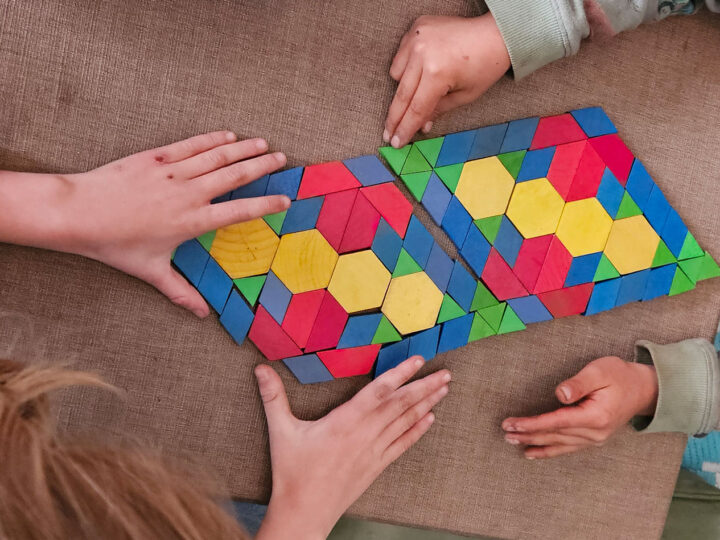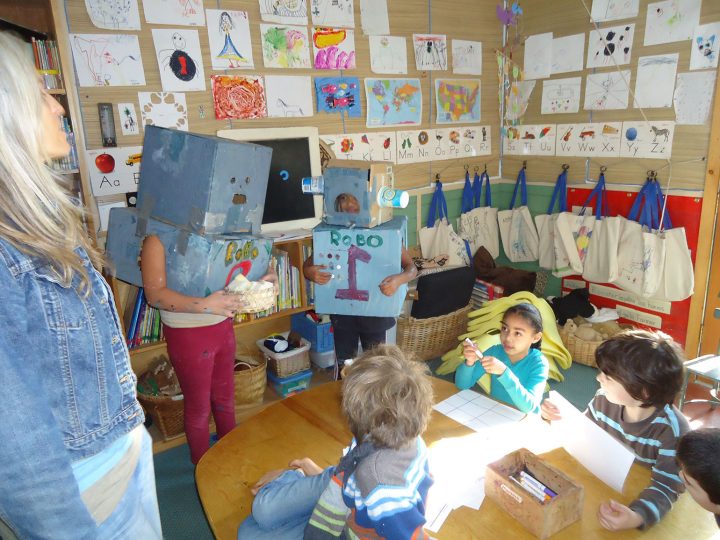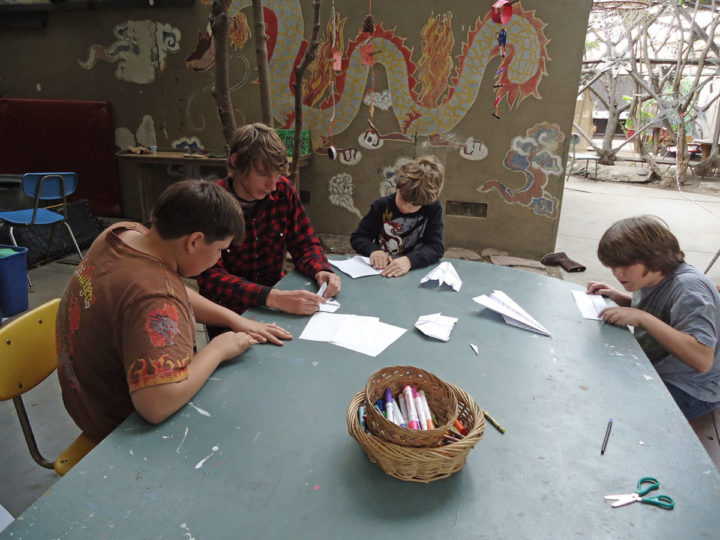by Unity Imani-ImoJah, Former Teacher
As a Play Mountain Place teacher, I have received questions from parents over the years about how students learn to read and write at Play Mountain Place. Play Mountain Place parents sometimes feel that because children make their own choices about how they construct their day, that perhaps the fundamentals of reading and writing are bypassed.
What I can say is that learning to read and write is a very personal process at Play Mountain Place. Children are not rushed to learn to read and write by a specific age. They do it in their own time and in their own way. Some children are already reading at age five and a half, and some are still working on their reading skills at age ten.
The building blocks of literacy begin on the Nursery side of school. Our Nursery side consists of Little Nursery (children ages 2½ to 3½) and Big Nursery/House Group (children ages 3½ to 5½). Learning to read is based on various structures. One key ingredient is reading to the child on a consistent basis. ThroughoutPlay Mountain Place, reading stories to students happens all the time. In addition to individual reading plans with children, every yard has “Stories at the Lunch Table” daily, where a teacher reads to the students as they eat lunch. Impromptu (and sometimes lengthy) discussions ensue between students and the teacher about the book being read, no matter what yard one is in.
Repetition of stories also helps the child build his/her reading skills. The child remembers the plot and is excited to show that he/she remembers it as the story is read. In addition, the child begins to recognize the print on the page and match it to the spoken word. Children will even correct the teacher reading the story if a teacher strays from the words as they are written in the book.
It’s also important that a child feels empowered with language. This happens in various ways at Play Mountain, the most obvious being the articulation of words through problem-solving and conflict resolution. Another way is to allow children to decide which words are important to them personally. When a child can “own” the words, he/she will remember them and utilize them much easier than words that have no personal meaning for the child.
An example of “owning” words can be found in a language arts plan I facilitated for Big Nursery/House Group children when I was a teacher in that yard during the 2006-07 school year. I created 3×5 cards on colored card stock. The premise of the plan was for each participant to come up with a word for each card. They could write the word on one side and draw a picture of the word on the other side. I had a poster that showed all of the letters of the alphabet as well as magnetic letters available for the children to refer to when writing their words. I talked about the different letters of the alphabet. For instance, I asked whose name began with the letter “G”. Gitane responded hers did. Both Gigi and Yogi stated they had “G” in their names. Alana said “Girl” started with “G” and wrote the word “Girl” on her card and drew a picture of a girl.
As we continued through the alphabet, Keller, Asher, and Xander were listening while they played on the fish structure nearby. They stopped what they were doing to yell over to me how to spell their names. They reported that they all had an “R” in their name! They also noticed that the “R” was at the end of all of their names. (Hey! Same, same!)
Some students practiced writing alphabet letters on their cards; some wrote words and drew pictures. One child even wrote sentences to go with her pictures. Some wrote their names. Some watched for awhile, then moved on. Whatever the children chose to do with the alphabet, they created their cards to reflect what was important to them in that moment. They took ownership of the letters and the words they were writing and discussing, infusing them with their own personal meaning.
The building blocks of literacy that begin on the Nursery side of school are expanded upon in Mountain Yard, Play Mountain’s elementary school program. As a Mountain Yard teacher this year, I work with students ranging from ages five ½ to eleven years old.
Literacy continues to be an active and engaging process on the Mountain Yard side of Play Mountain. Some students are drawing amazing pictures for stories with plots that they write down themselves or they narrate to a teacher who writes the plot down for them. Some illustrate their own comic strips and write their own dialogue for their characters. Others decipher words and work on their math skills while playing with “Yu-Gi-Oh” or “Pokemon” cards. Still others work for hours, writing and drawing in their personal journals. Some sit, quietly, in the midst of a pillow-throwing plan going on around them, engrossed in the book they are reading. Yet others articulate themselves clearly during a problem they are involved in. In addition, some students involved in role-playing games move around the yard in their own imaginary world, creating characters, dialogue and situations that have depth, texture ad meaning to them.
The teachers are there to facilitate the process for each student by meeting each child where they are at in terms of their own interests and building upon these interests. Teachers also provide teacher-led plans that encourage reading and writing skills. For instance, one week my teacher-led plan was to do a “Word Search Neighborhood Walk”. After all, the neighborhood is full of “environmental print”. This is a term teachers use to refer to the print one sees all around us, everywhere, i.e. street signs, restaurant marquees, etc. The idea is to make use of environmental print to help students start recognizing the words around them in their everyday life.
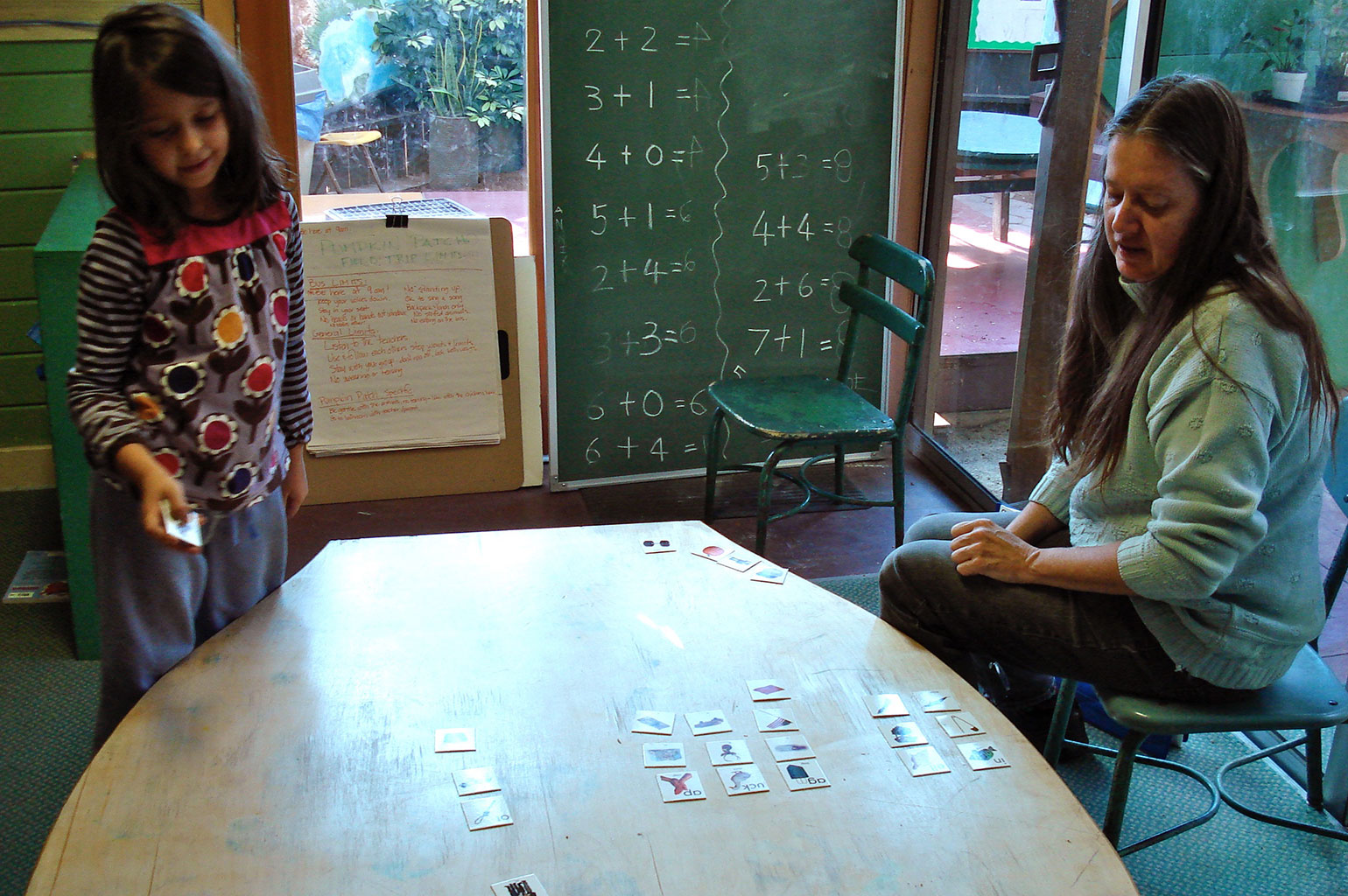
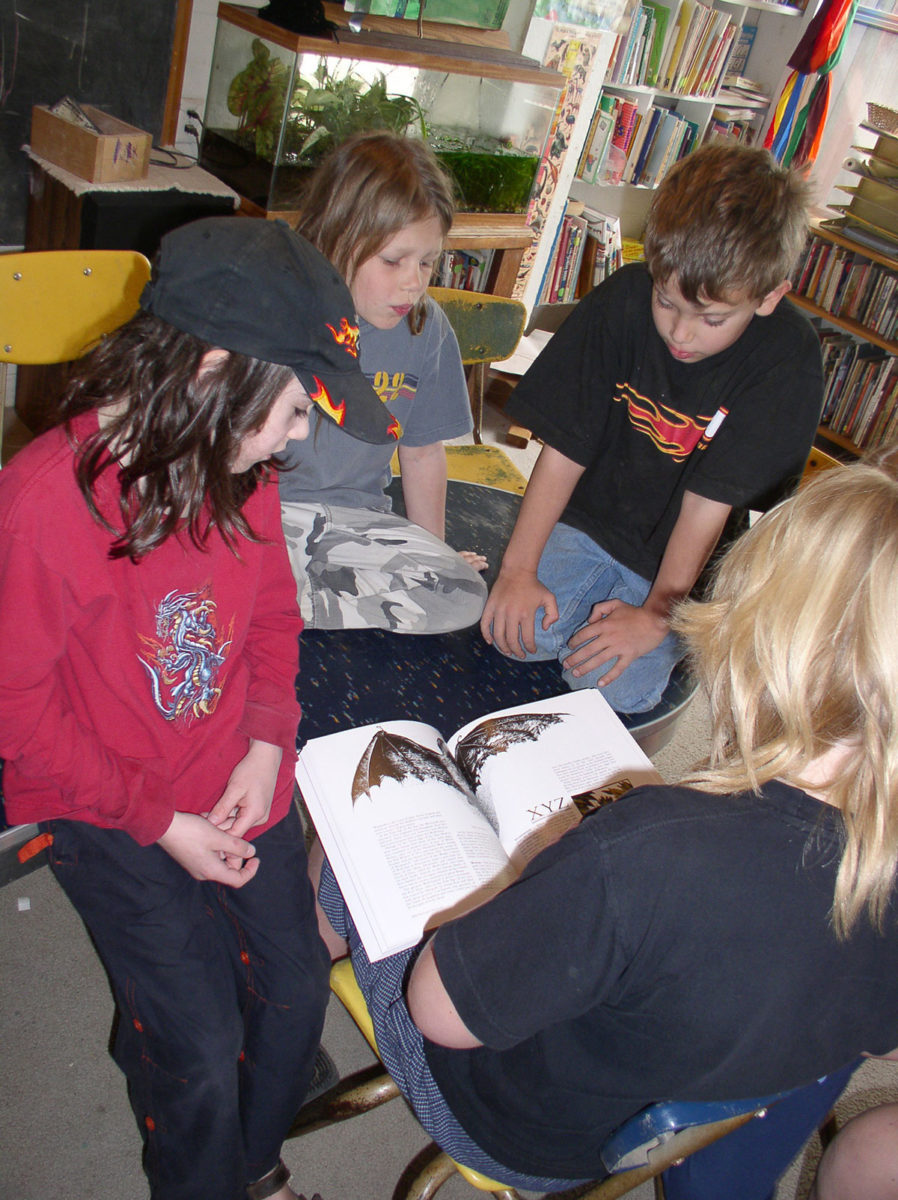
I had six students ranging from ages 5 ½ to 8 years old who chose to go on the walk with me and Nitai, another Mountain Yard teacher. Marson, Ruby, and Martin all carried clipboards with paper and pencils, Noah and Emilia chose to bring their journals to write in, and Carlos wanted me to write down the words he found. With our writing tools in hand, we were all ready to walk the neighborhood in search of words. I had envisioned that we would go down to Washington Boulevard in order to take advantage of all the restaurant and business signs that abound there. Instead, however, the students started pointing out words as soon as we went outside the Play Mountain gate!
The first words we noticed were “Play Mountain Place” on the sign above the front entrance! We then noticed a stop sign on the corner and a sign in front of the alley, “Not a through street”. Such excitement exuded from the students as we started walking down Hargis Street (away from Washington Boulevard) seeing all sorts of words as we walked. A warning for an alarm system posted in a house window combined numbers and words: 1-877-Security. (Some students decided they were only searching for words on this trip, not numbers, so they did not write down the numbers, only the word “Security.”) We noticed a trash bin for recycling that stated “Yard Waste Only.” Also, “Recortes de Jardin Solamente”. While translating the Spanish words into English, Carlos learned for the first time that Marson spoke some Spanish and had lived in Colombia for a time. Marson discovered that Carlos was fluent in Spanish and English.I mentioned that I spoke Spanish, too… The search went on! Nitai pointed out that some signs don’t have words or numbers but just symbols or pictures as we discovered on the “Neighborhood Watch” sign. We discovered so many names of cars as we made our way down the block Toyota, Honda, Carson, CRX, Lexus, Nissan, and Highlander. The words that appealed to each child, he or she wrote them down. It was a collaborative effort. Students spelled the words for each other so they could write them on their papers. For Carlos, it was a contest. How many words could he find and tell me to write down? For Noah and Emilia, it was important to get their words into their journals. For Martin, Ruby and Marson, taking the time to make each letter for each word was meaningful work, so they would not be rushed.
We came across a tree in a neighbor’s parkway and Noah noticed that someone had etched words into the tree. He commented how that was not good for the tree. The students unanimously decided not to write down any of the words found on the tree in protest! We moved on. The last word to be written was Dodge. While some felt that the white Dodge in the driveway was brand new because it was so white and shiny, Carlos disagreed. He pointed out that they might have used some chemicals or paint to make the car look new, but if you looked at the trailer hitch on the back, it was rusty, so the car was not new. He said he know this stuff because he works with his dad on cars sometimes, although not as much as he used to.
Well, our forty-five minute walk got us two thirds of the way down Hargis Street! Feeling accomplished with the words we had discovered, we ran back to Play Mountain, the words we had so painstakingly written and discussed a mere blur as we rushed by!
These are examples of how literacy works at Play Mountain Place. Since literacy is so immersed in the entire curriculum, perhaps one might not notice it at first glance. Let there be no doubt about it, however. Literacy is alive and well at Play Mountain Place.



